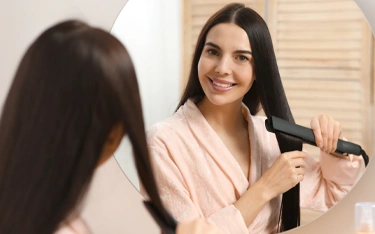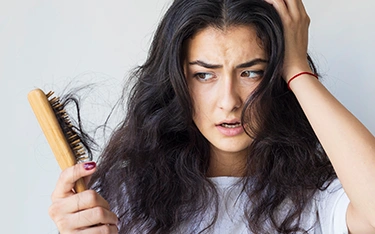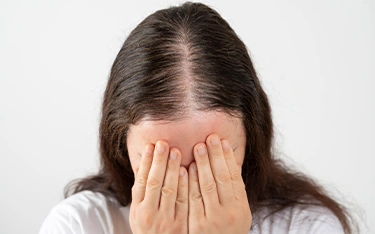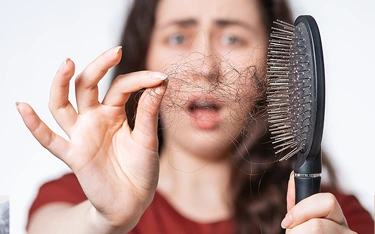The Right Way to Straighten Hair Without Damage
1. Begin with Clean, Conditioned Hair
Why it matters: Imagine ironing a wrinkled shirt without washing it—the dirt, oil, and buildup would burn right into the fabric. The same thing happens to your hair!
- Wash your hair with a gentle, sulfate-free shampoo to remove buildup.
- Use a hydrating conditioner to prevent frizz and dryness.
- Towel-dry your hair gently and air dry till it’s at least 80% dry before using any heat tools.
Check out Hair Care for Chemically Straightened Hair
2. Shield Your Hair with Heat Protectant
Think of this as sunscreen for your hair!
- Apply a serum or a lightweight heat protectant spray to protect against heat damage.
- Focus on the mid-lengths and ends, where damage happens the most.
- Don’t skip this step—it makes a huge difference in preventing split ends and dryness.
3. Choose the Right Hair Straightener
Not all straighteners are created equal. Picking the right tool for your hair type can prevent unnecessary damage.
- Fine or thin hair? Go for ceramic plates that distribute heat evenly.
- Thick or curly hair? Titanium plates heat up faster and smooth out coarse hair better.
- Adjustable temperature settings are necessary—higher heat isn’t always better!
4. Use a Detangling Comb or Brush
Ever noticed how some sections of your hair straighten better than others? That’s because knots and tangles create uneven heat distribution.
- Run a wide-toothed comb through your hair before straightening.
- Section your hair into small, manageable parts to avoid over-ironing the same spots.
Check out Hair Fall Control Tips
5. Maintain Gentle Pressure
Tugging, clamping too hard, or passing the straightener over the same section multiple times = major breakage.
- Use gentle, steady pressure when gliding the iron down your hair.
- One smooth pass is better than multiple rough ones!
6. Limit Heat Exposure
Turn down the heat! Just because your straightener heats up to 230°C doesn’t mean you should max it out.
- Fine or damaged hair? Keep it between 120-150°C.
- Thicker or coarser hair? 180-200°C should be enough.
- If you hear sizzling, smell burning, or see smoke—STOP. That’s your hair screaming for help.
7. Finish with Nourishing Products
Now that your hair is looking sleek and gorgeous, lock in the moisture.
- Maintain the softness of your hair by applying a few drops of argan or coconut oil
- Prevent frizziness by using a lightweight, silicone-free serum.
- Don’t forget—hydrated hair = healthy, happy hair!
Learn How Homeopathy Can Regrow Hair After Heat Damage
Homeopathy for Heat-Damaged Hair & Hair Fall
If your hair has already suffered from years of heat styling, homeopathy can help restore its natural strength and shine.
- Strengthens weak hair follicles, reducing breakage.
- Improves scalp health to prevent excessive dryness.
- Promotes hair regrowth naturally without harsh chemicals.
Common Homeopathic Remedies for Heat-Damaged Hair
- Silicea – Restores shine and strengthens fragile hair.
- Thuja Occidentalis – Prevents heat-induced hair thinning.
- Phosphorus – Hydrates the scalp and prevents split ends.
Book a Consultation for Homeopathic Hair Care Treatment
Dr Batra’s® pro tip:
Frequent heat styling strips away natural moisture. Give your hair time to recover between sessions.




